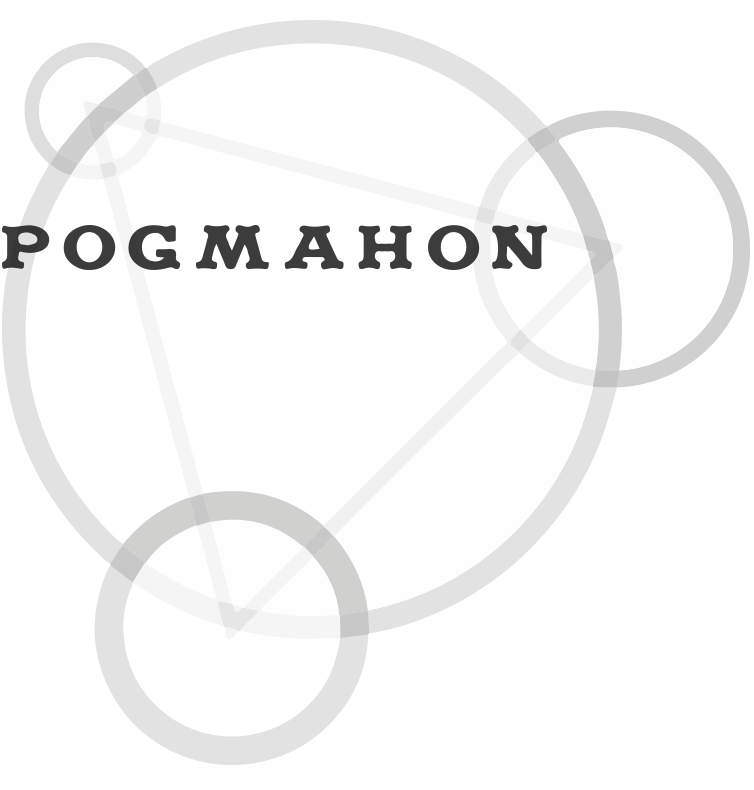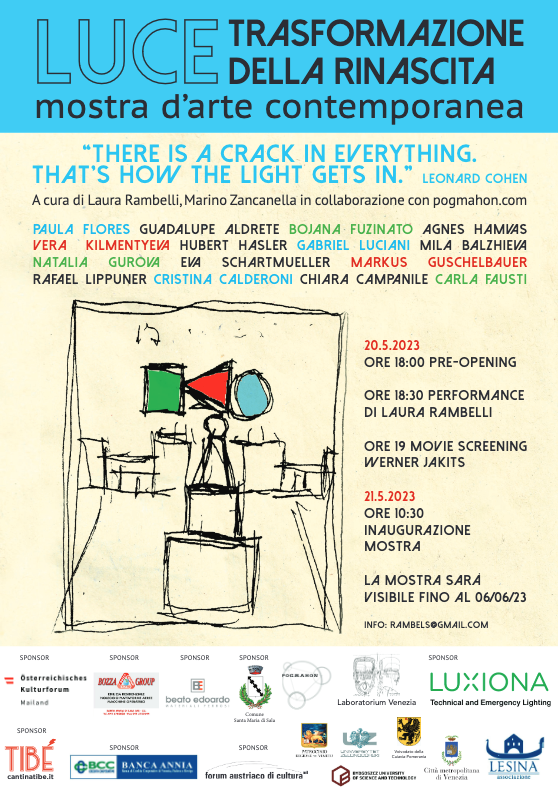Villa Farsetti
There is a crack in everything. That‘s how the light gets in.
C’è una crepa in ogni cosa. È così che entra la luce.
Leonhard Cohen
Villa Farsetti Santa Maria di Sale / Venetien / Italia
Pre Opening 20.5.2023 6 pm
Performance Laura Rambelli 6:30 pm
Movie Screening Tumbling Dice by Werner Jaktis 7 pm
Inaugurazione 21.5.2023 10 am
Duration 21.05. – 06. 06. 2023
Guadalupe Aldrete * Mila Balziehva * Cristina Calderoni * Chiara Campanile * Natalia Gurova *
Paula Flores * Carla Fausti & Paula Linda Sabbati *
Bojana Fuzinato-Stamenkovic * Àgnes Hamvas *
Vera Klimentyeva * Eva-Maria Schartmüller * Gabriel Luciani * Markus Guschelbauer *
Werner Jakits * Rafael Lippuner * Hubert Hasler *
Kuratiert von Laura Rambelli & Denise Parizek
In Kooperation mit Villa Farsetti, Marino Zancanella, 18. Architekturbiennale Venedig 2023, Laboratorio Venezia, Luxoria Light Company
Supported by ACF Milano
Pictures of the Exhibition
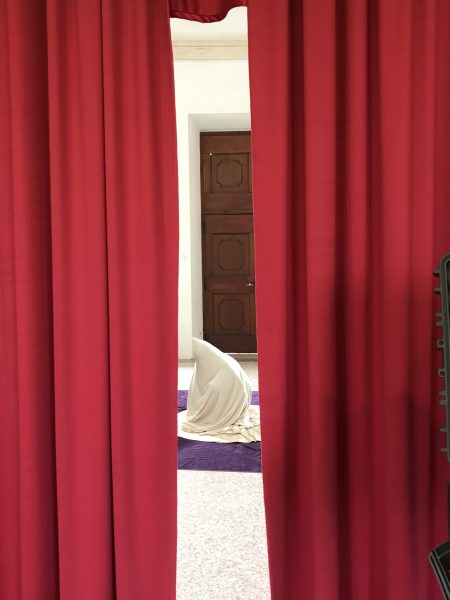
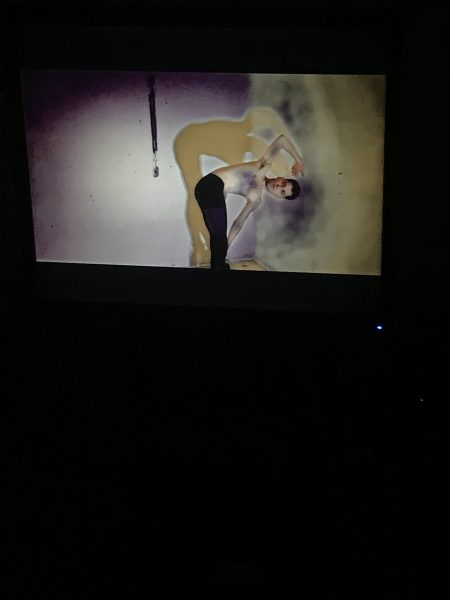
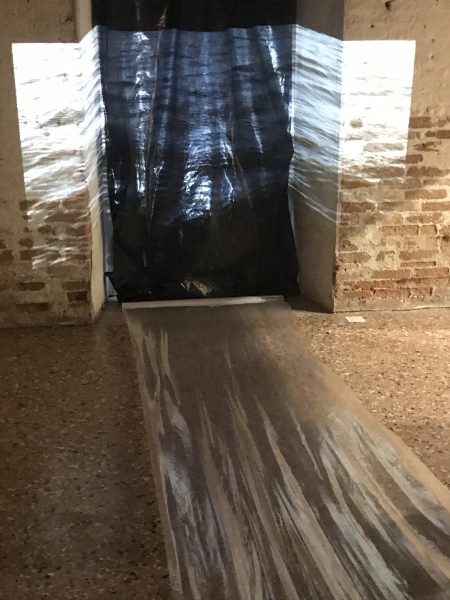
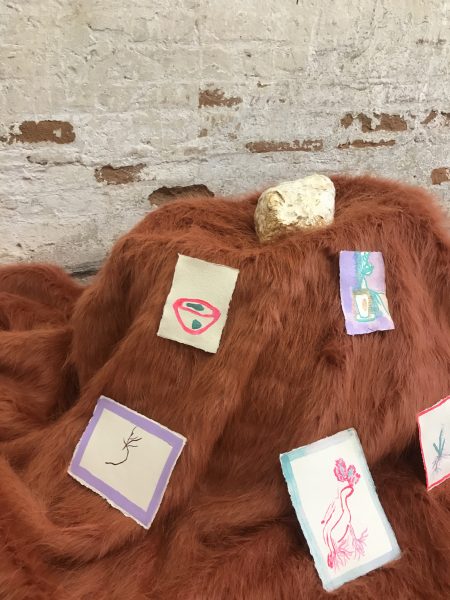
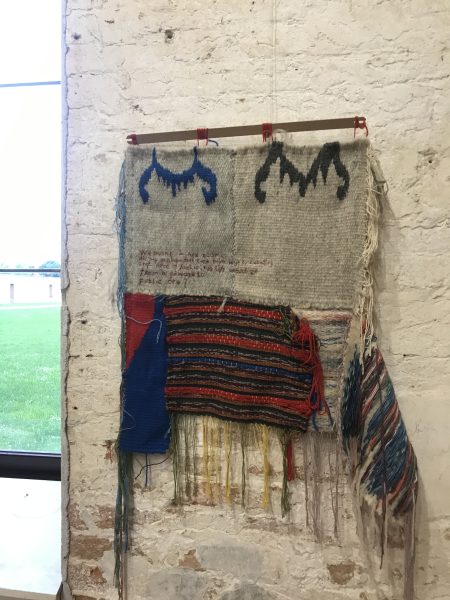
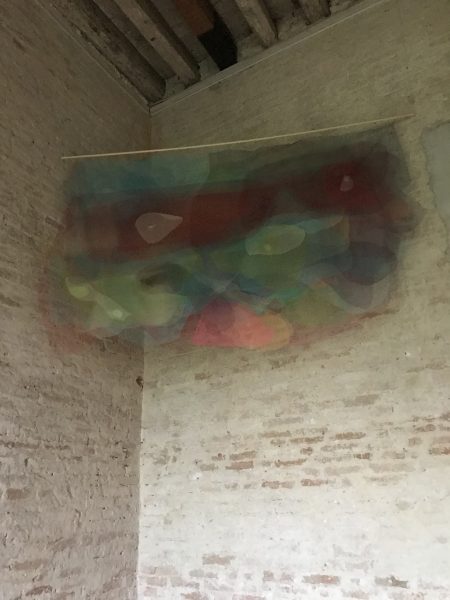
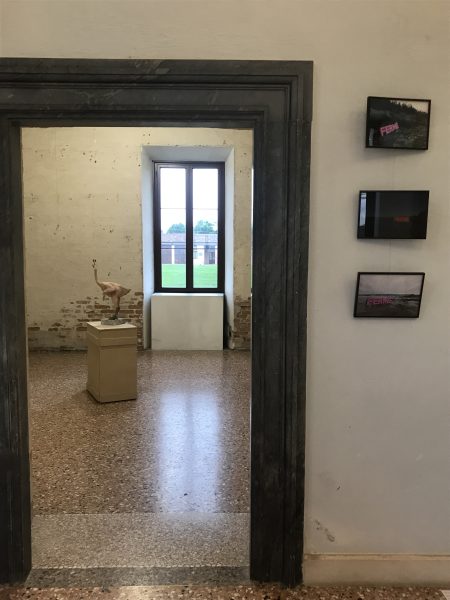
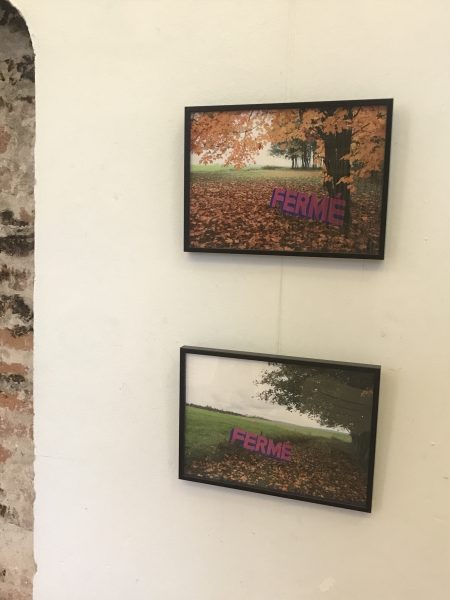
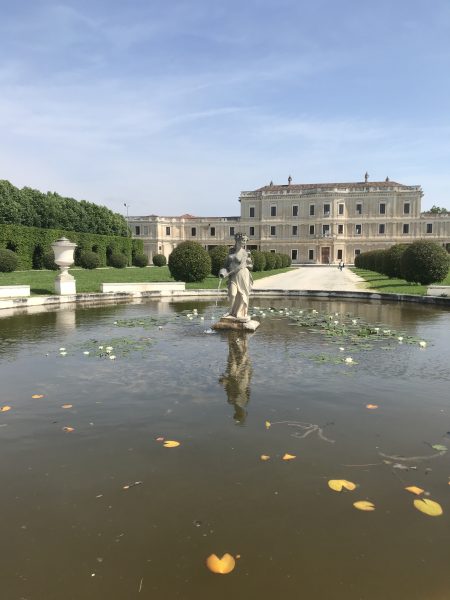
Copyright Rafael Lippuner
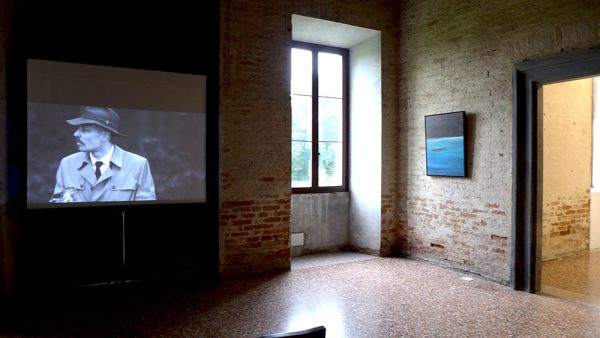
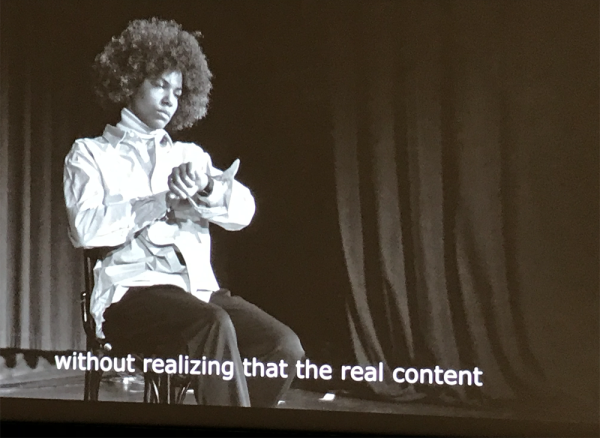
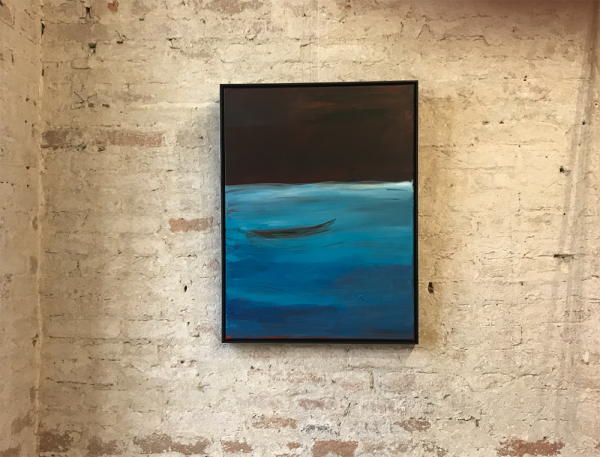
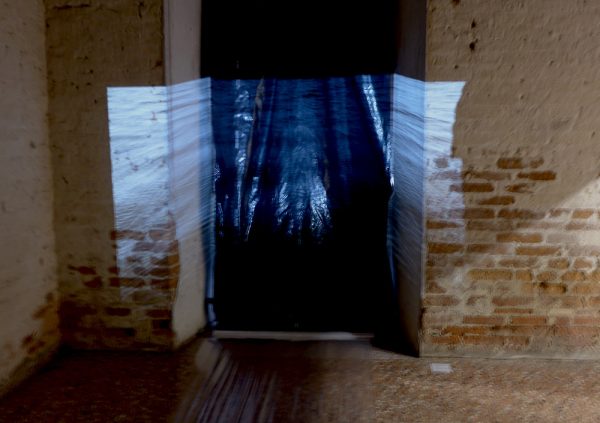
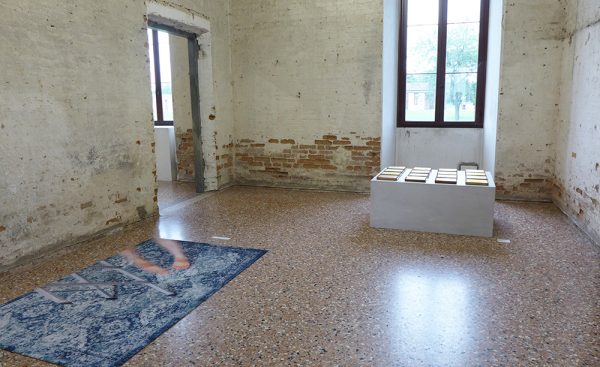
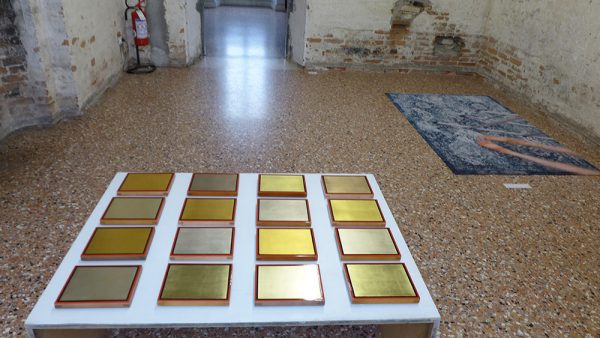
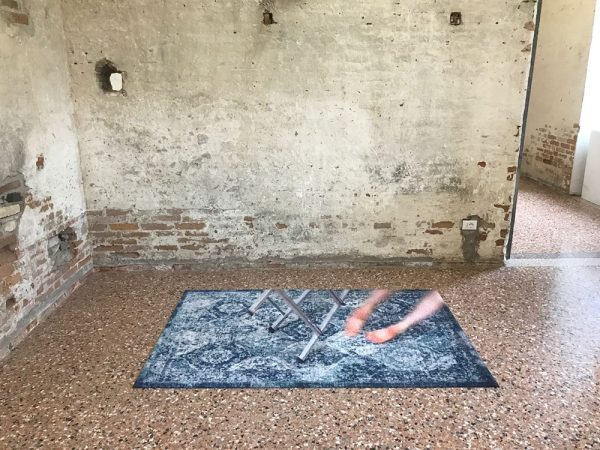
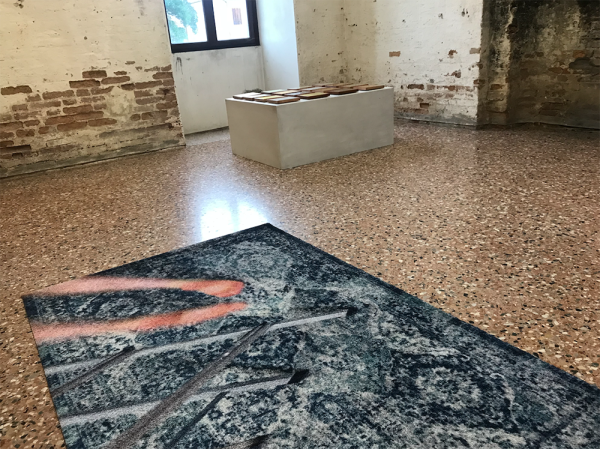
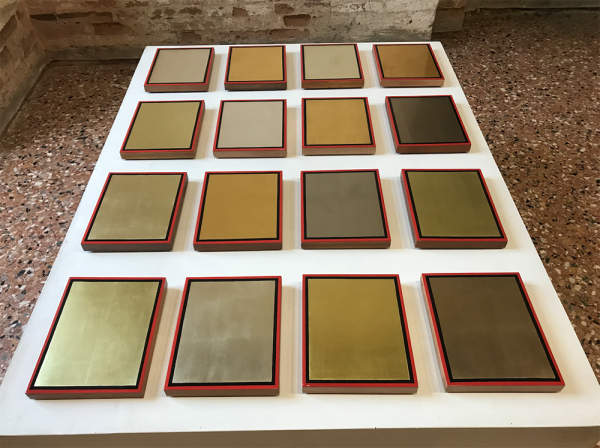
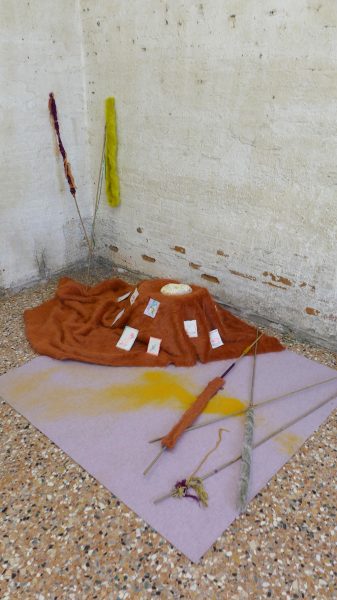
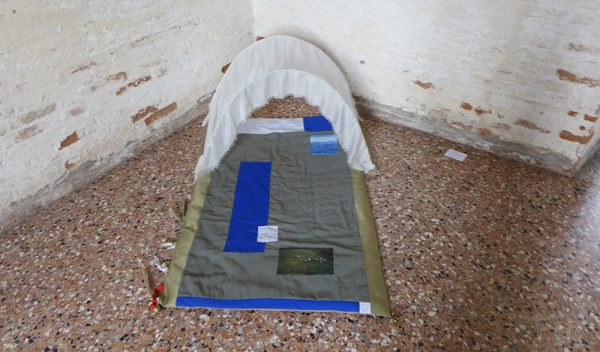
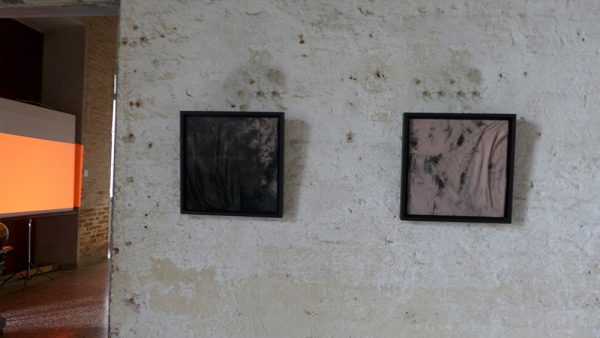
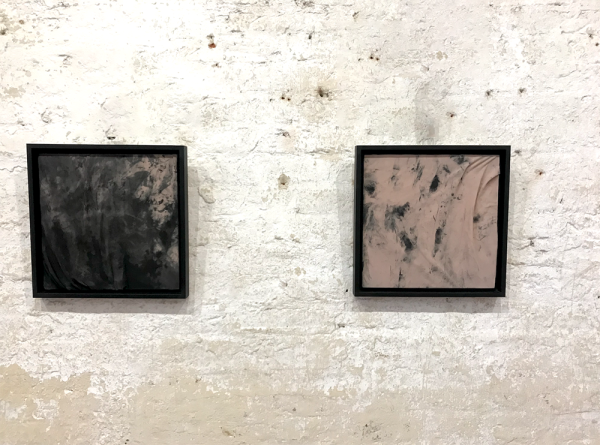
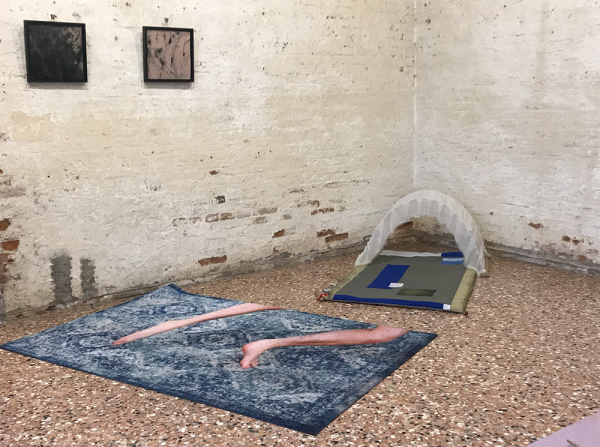
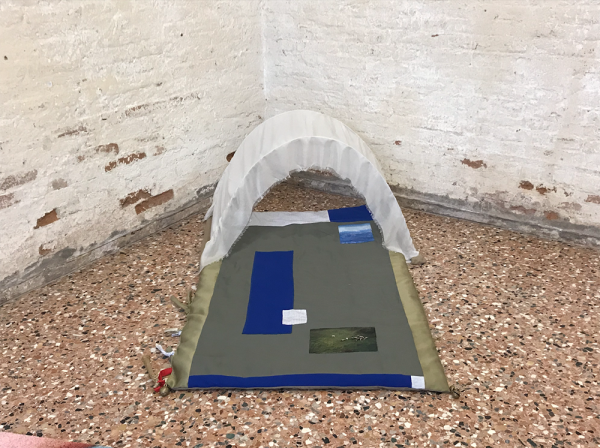
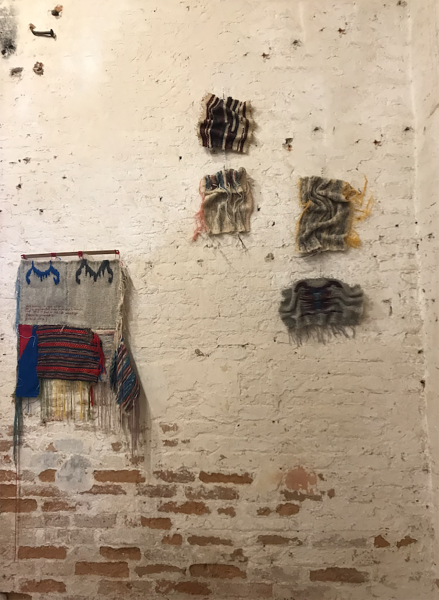
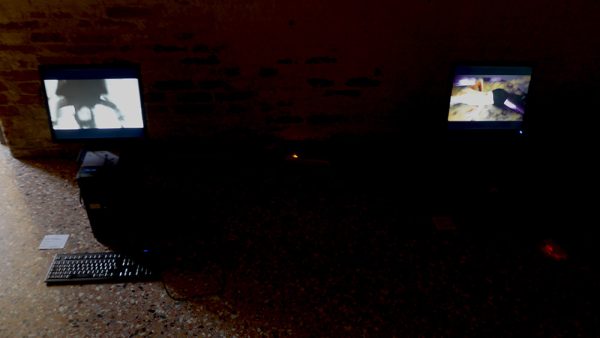
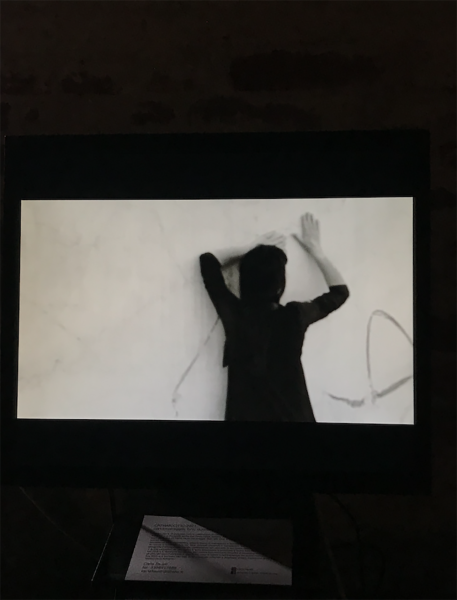
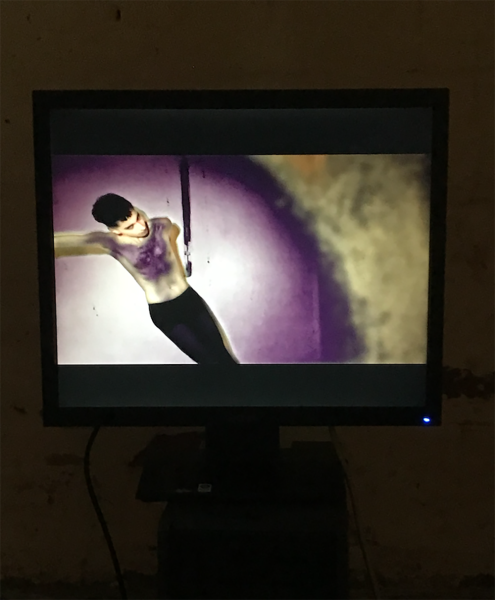
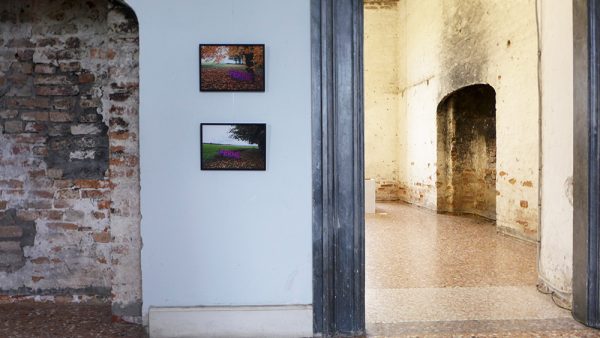
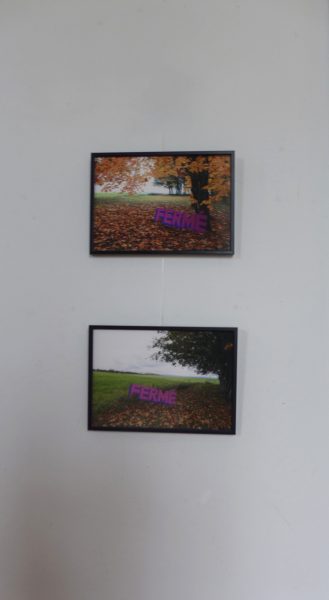
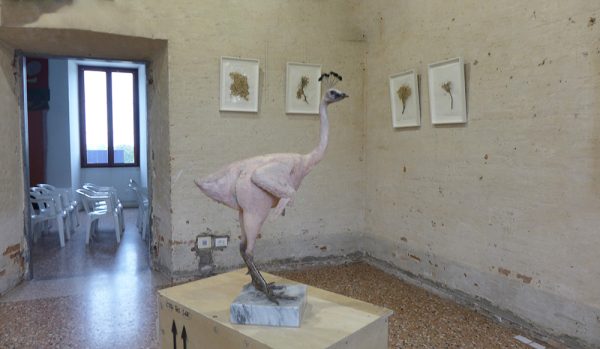
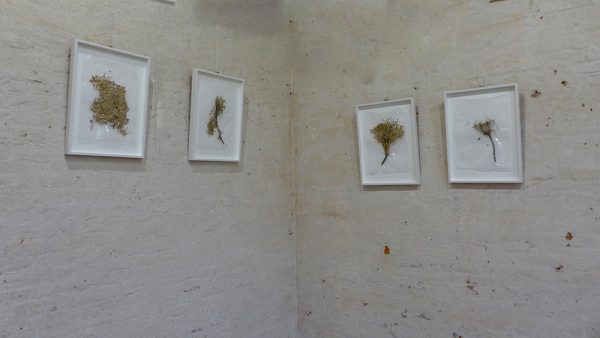
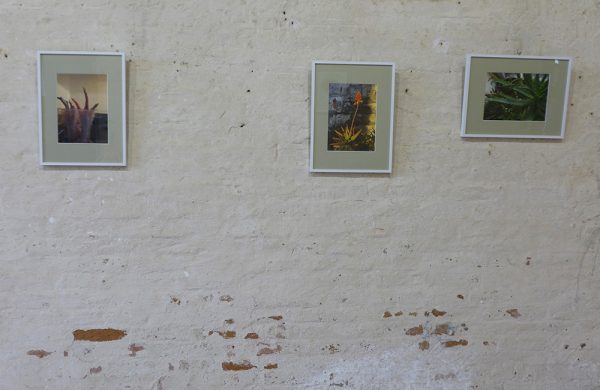
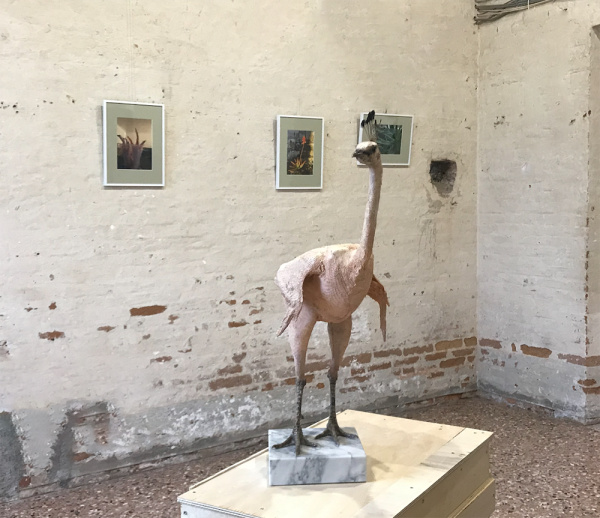

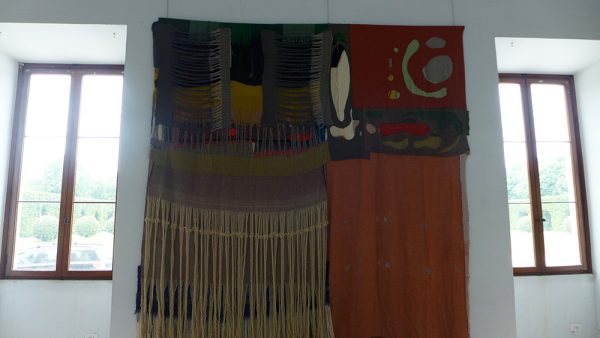
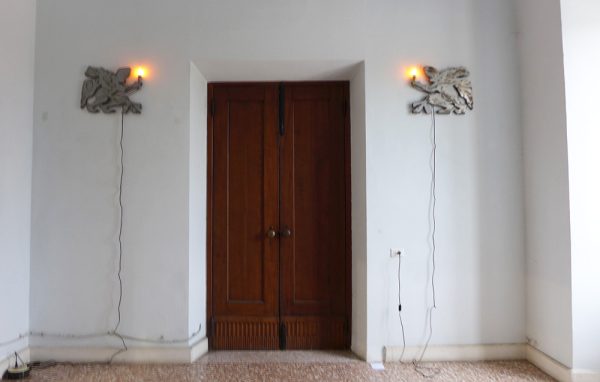
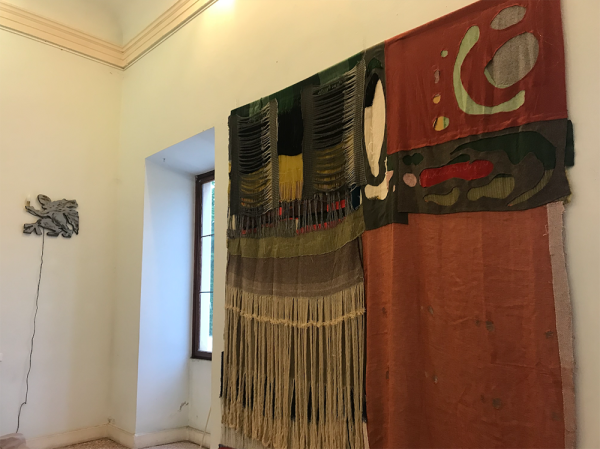
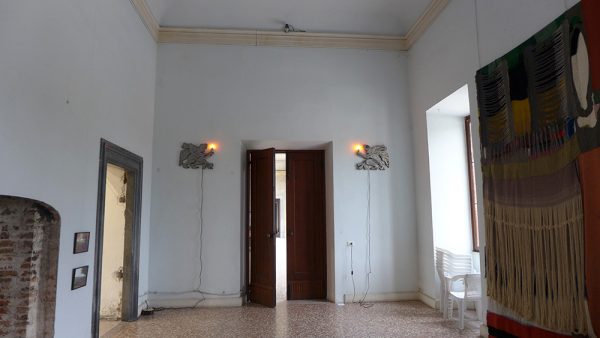
Photocredits Natalia Gurova & Mute Insurgents 2023
Es kracht im Gebälk. Die apokalyptischen Reiter sind unterwegs. Trotzdem sieht der Mensch immer noch ein Licht der Hoffnung. Wegen des Risses in jeder Mauer, der Licht durchlässt. Evolution oder Hybris?
I know that for thirty years now we have been looking for ways to get out of postmodernity above or below or behind and into this present….The belief that the world used to be more manageable has always been a bogus narrative. For it was only so straight because it was viewed from a single social and global position (you know which)?
„So che da trent’anni a questa parte stiamo cercando il modo di uscire dalla postmodernità sopra o sotto o dietro e di entrare in questo presente…. La convinzione che il mondo fosse più gestibile in passato è sempre stata una narrazione fasulla. Perché era così rettilineo solo perché era visto da un’unica posizione sociale e globale, (sapete quale)?“
Kim de l ́Horizon
The answer we can give, with all the wars, earthquakes, pandemics, is that we will only survive together. We need more utopia and perhaps also magic in the world.
That is why we have decided to organise a cross-border exhibition with artists from Mexico, Ukraine, Italy, Croatia, Serbia, Austria, the Republic of Buratia, Russia and Spain/USA in the Villa Farsetti, on the occasion of the 18th Architecture Biennale in Venice, to show how diverse the Viennese art scene is. Origin, sexual orientation and religion do not matter at all, we are working together on a utopian model for our future.
“The eradication of these practices (witchcraft and magic) was a necessary precondition for the capitalist rationalisation of labour, because magic appeared as an illicit form of power and as a means to obtain what one desired without work: It was thus practical refusal of labour. “Magic kills industry” complained Francis Bacon.”
La risposta che possiamo dare, con tutte le guerre, i terremoti, le pandemie, è che sopravviveremo solo insieme. Abbiamo bisogno di più utopia e forse anche di magia nel mondo.
Per questo abbiamo deciso di organizzare una mostra transfrontaliera con artisti provenienti da Messico, Ucraina, Italia, Croazia, Serbia, Austria, Repubblica di Buriazia, Russia e Spagna/USA a Villa Farsetti, in occasione della 18a Biennale di Architettura di Venezia, per mostrare quanto sia variegata la scena artistica viennese. Origine, orientamento sessuale e religione non hanno alcuna importanza, stiamo lavorando insieme a un modello utopico per il nostro futuro.
“L’eliminazione di queste pratiche (stregoneria e magia) era una condizione necessaria per la razionalizzazione capitalistica del lavoro, perché la magia appariva come una forma illecita di potere e come un mezzo per ottenere ciò che si desiderava senza lavorare: Si trattava quindi di un rifiuto pratico del lavoro. “La magia uccide l’industria”, lamentava Francis Bacon”.
Silvia Federici
How dare we reduce the body to biology? Let’s talk about the commonalities, the universalism that connect us, like bone marrow, flesh, atoms, gravity, affect. If we can understand the body in terms of its affectivity, vulnerability, fragility, sensitivity, corporeality, we can come closer to a deeper understanding of our manifestations. Empathy can be derived from understanding, but not on a biological-scientific level that wants to expose and reveal, but on a path of accepting the improbable, the inexplicable, the without coordinates. We, social beings, will come out of ourselves to find real existence in each other.
Come osiamo ridurre il corpo alla biologia? Parliamo dei punti in comune, dell’universalismo che ci unisce, come il midollo osseo, la carne, gli atomi, la gravità, gli affetti. Se riusciamo a comprendere il corpo in termini di affettività, vulnerabilità, fragilità, sensibilità, corporeità, possiamo avvicinarci a una comprensione più profonda delle nostre manifestazioni. L’empatia può derivare dalla comprensione, ma non su un piano biologico-scientifico che vuole esporre e rivelare, bensì su un percorso di accettazione dell’improbabile, dell’inspiegabile, del senza coordinate. Noi, esseri sociali, usciremo da noi stessi per trovare la vera esistenza nell’altro.
The artistic approaches are very different, as are the media used to visualise utopia and dystopia. Our goal is to regain the ability to survive together, to sustainable social change and system change. In our curatorial decisions, we try to present as many themes as necessary to initiate a broad discussion and hopefully a subsequent paradigm shift.
We invite you to hope. Hope is bold, hope is radical.
Gli approcci artistici sono molto diversi, così come i media con cui vengono visualizzate utopia e distopia. Il nostro obiettivo è quello di ritrovare la capacità di sopravvivere insieme, di cambiare in modo sostenibile la società e il sistema. Nelle nostre scelte curatoriali, cerchiamo di presentare il maggior numero di temi necessari per avviare un’ampia discussione e, auspicabilmente, un successivo cambiamento di paradigma.
Vi invitiamo a sperare. La speranza è audace, la speranza è radicale.
LIQUID LEGACY V
Painting, 2022
It was while trying to remember my own birth that I discovered the huge amount of information accumulated in my skin. Memories of before and after the birth, memories of my childhood, memories of love but also of fear and pain. It is also the skin that works as a canvas of our heritage, of our origin, of the colour of our ancestry and what it seems to be our destiny.
The embodiment of heritage and ancestry. That is the meaning of my work, especially of this series. Iconographically, the pink colour represents the skin, but the skin inside our bodies, where we all look the same, where our nerves run. Black takes its form from the job of my father in an oil refinery, and at the same time, is a call and a materialisation of my entire ancestry and of the burdens they inherited.
È stato mentre cercavo di ricordare la mia nascita che ho scoperto l’enorme quantità di informazioni accumulate nella mia pelle. Ricordi di prima e dopo la nascita, ricordi della mia infanzia, ricordi di amore ma anche di paura e dolore. È anche la pelle che funziona come una tela del nostro patrimonio, della nostra origine, del colore della nostra discendenza e di quello che sembra essere il nostro destino.
L’incarnazione del patrimonio e dell’ascendenza. Questo è il significato del mio lavoro, in particolare di questa serie. Iconograficamente, il colore rosa rappresenta la pelle, ma la pelle all’interno del nostro corpo, dove siamo tutti uguali, dove corrono i nostri nervi. Il nero prende forma dal lavoro di mio padre in una raffineria di petrolio e, allo stesso tempo, è un richiamo e una materializzazione di tutta la mia ascendenza e dei fardelli che hanno ereditato.
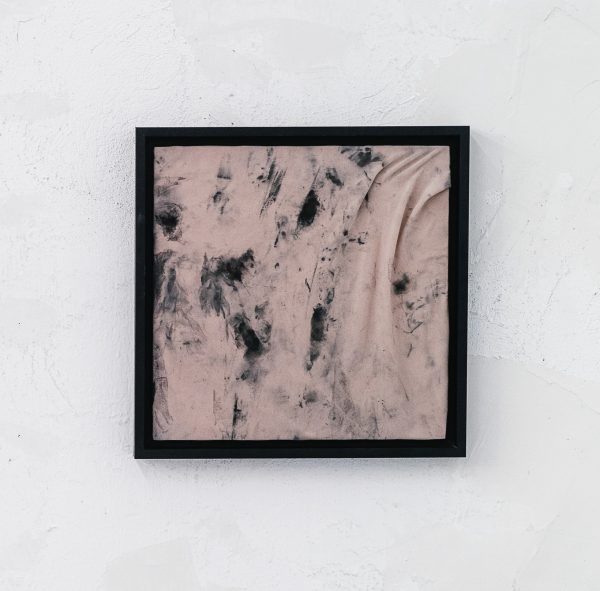
I HAVE WHAT I HAVE
Installation, textile, digital prints, brass, 2022
While sleeping, we need a safe space to be protected physically and spiritually, especially when sleeping in a new, unfamiliar place. This sleeping unit represents my vision of finding a safe, intimate space.
I surround myself with familiar things; I bring photos to remind me of my land. Maybe I can travel there in my dreams.
The sound of the little bells will protect me from evil spirits and nightmares.
I find how to get to the point of comfort to recharge and stabilize. I am building my new home.
Quando dormiamo, abbiamo bisogno di uno spazio sicuro per essere protetti fisicamente e spiritualmente, soprattutto quando dormiamo in un luogo nuovo e sconosciuto. Questa unità di sonno rappresenta la mia visione di trovare uno spazio sicuro e intimo.
Mi circondo di cose familiari, porto con me foto che mi ricordano la mia terra. Forse posso viaggiare lì nei miei sogni.
Il suono delle campanelle mi proteggerà dagli spiriti maligni e dagli incubi.
Trovo il modo di raggiungere il punto di conforto per ricaricarmi e stabilizzarmi. Sto costruendo la mia nuova casa.
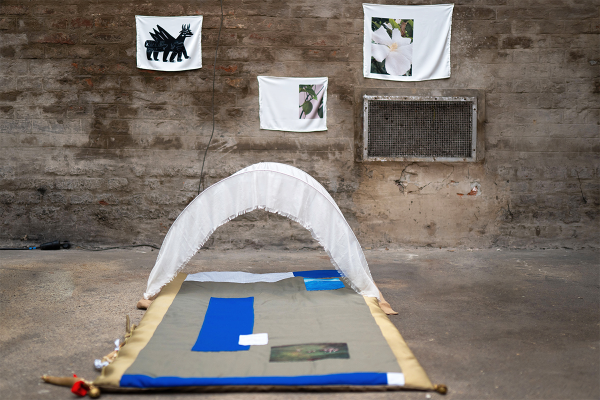
LOVESTORY
315 x 325cm, Collage, industrial waste of fabric, 2020/21
sponsored by Lanificio Paoletti
Curtains are visible from the outside and create a connection between inside and outside. With their thin layer of fabric, they separate our home from the rest of the world, acting as an eyelid for the home. Curtains are also how we choose to frame our view of the world outside the window, and they say a lot about our personality, tastes, and social status.
Lovestory creates a temporary but flexible space. Although the word tape is generally associated with the concept of repair, here it is understood as a constructive tool; an impermanent glue that can form a structure. The installed fabrics allow light to filter through their different thicknesses and transparencies, transforming the space into a shelter, or a temporary home.
The wool scraps used were donated by Lanificio Paoletti, located in Follina, Italy. Each piece of fabric provided retains its own specific identity, linked to the manufacturing process, the stage of production and the specific historical context in which it was conceived. Each remnant of fabric is therefore imbued with its own memory.
One of the fabrics is characterized by long threads connecting two finished pieces of fabric. These threads are the consequence of pauses during the weaving of the fabric itself, becoming a visible metaphor for relationships, in which silence, exchange, dialogue and distance are visually materialized.
Le tende sono visibili dall’esterno e creano un collegamento tra interno ed esterno. Con il loro sottile strato di tessuto, separano la nostra casa dal resto del mondo, fungendo da palpebra per l’abitazione. Le tende sono anche il modo in cui scegliamo di inquadrare la nostra visione del mondo fuori dalla finestra e dicono molto della nostra personalità, dei nostri gusti e del nostro status sociale. Lovestory crea uno spazio temporaneo ma flessibile. Sebbene la parola nastro adesivo sia generalmente associata al concetto di riparazione, qui è intesa come uno strumento costruttivo; una colla impermanente che può formare una struttura. I tessuti installati permettono alla luce di filtrare attraverso i loro diversi spessori e trasparenze, trasformando lo spazio in un rifugio, o in una casa temporanea. Gli scarti di lana utilizzati sono stati donati dal Lanificio Paoletti di Follina, in Italia. Ogni pezzo di tessuto fornito conserva una propria identità specifica, legata al processo di lavorazione, alla fase di produzione e allo specifico contesto storico in cui è stato concepito. Ogni scampolo di tessuto è quindi intriso di una propria memoria.
Uno dei tessuti è caratterizzato da lunghi fili che collegano due pezzi di tessuto finiti. Questi fili sono la conseguenza di pause durante la tessitura del tessuto stesso, diventando una metafora visibile delle relazioni, in cui silenzio, scambio, dialogo e distanza si materializzano visivamente.
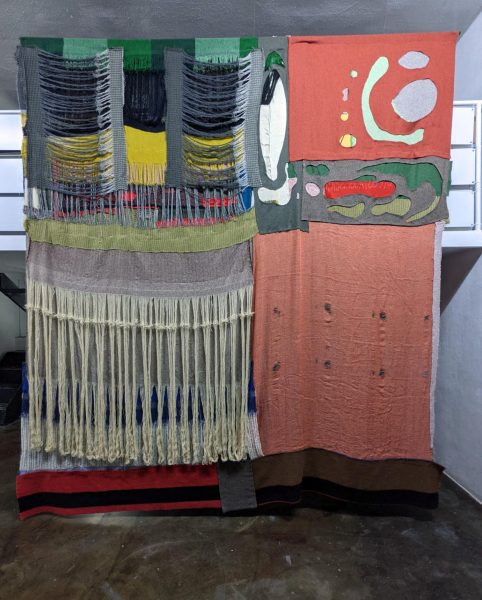
RISK
2021, tulle, 230×160 cm
A map is a representation of a real section of the earth that allows us to analyze certain characteristics of our planet by showing the relationship between them.
It can be used to navigate in a country, to improve our knowledge or to plan a trip. Today we are very used to ultra-precise mapping systems such as Google Maps or Google Earth, which can also tell you in real life how much traffic there is on the way home. This mapping system materializes the user on the map as a blue dot around which everything revolves. This blue dot gives us the feeling that we are actively present on the map, at the center of it. Today it is fundamental to know where we are in relation to the complexity of cities.
Risk is a map made of tulle, a semi-transparent fabric that, by overlapping, creates new colors that describe a landscape that creates itself. The color acts as an identity for each of its layers and creates areas of color, these geographical spaces of color or states are not always clear and easy to read. This map describes a mental space in which each layer represents an imaginary territory. The states overlap and their colors mix visually, but at the same time each layer retains its color, its independence. This fact draws attention to the relationships between all the components. This map is a mental topography, a utopian vision.
Una mappa è una rappresentazione di una sezione reale della terra che ci permette di analizzare alcune caratteristiche del nostro pianeta mostrando la relazione tra di esse.
Può essere utilizzata per navigare in un paese, per migliorare le nostre conoscenze o per pianificare un viaggio. Oggi siamo molto abituati a sistemi di mappatura ultraprecisi come Google Maps o Google Earth, che possono anche dirci in tempo reale quanto traffico c’è sulla strada di casa. Questo sistema di mappatura materializza l’utente sulla mappa come un punto blu attorno al quale ruota tutto. Questo punto blu ci dà la sensazione di essere attivamente presenti sulla mappa, al centro di essa. Oggi è fondamentale sapere dove ci troviamo rispetto alla complessità delle città.
Risk è una mappa fatta di tulle, un tessuto semitrasparente che, sovrapponendosi, crea nuovi colori che descrivono un paesaggio che si crea da solo. Il colore funge da identità per ognuno dei suoi strati e crea aree di colore, questi spazi geografici di colore o stati non sono sempre chiari e facili da leggere. Questa mappa descrive uno spazio mentale in cui ogni strato rappresenta un territorio immaginario. Gli stati si sovrappongono e i loro colori si mescolano visivamente, ma allo stesso tempo ogni strato mantiene il suo colore, la sua indipendenza. Questo fatto richiama l’attenzione sulle relazioni tra tutti i componenti. Questa mappa è una topografia mentale, una visione utopica.
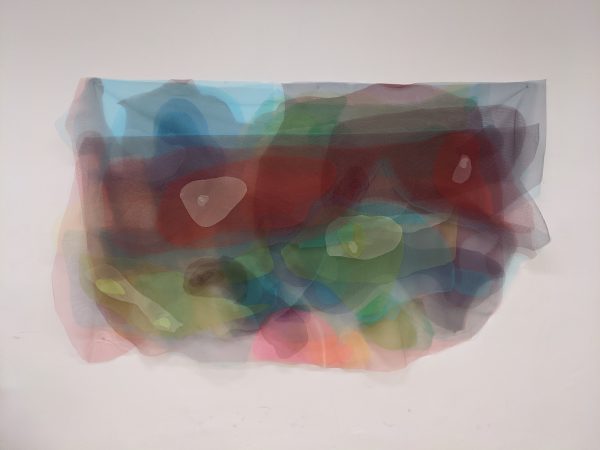
CARLA FAUSTI & PAULA LINDA SABBATI
CATHAR(C)TIC
Movie, 2022
Cathar(c)tic is an audiovisual project created by a female collective, composed of flutist Laura Trainini, pianist Elisabetta Marcolini, performance photographer Paola Linda Sabatti and documentary anthropologist Carla Fausti.
The intent, expressed through the dual medium of music, amplified by videographic images, is to emphasise the cathartic role of art and its founding value in human society. The central theme that allows the transmediality of the project is madness, a red thread that links the sound medium to the visual one and on which the filmic images are built, in black and white, inspired by the structure of the pieces and the states of mind that arise from them.
The piece presented here is Wild Riot of the Shaman’s Dreams by Michael Colgrass, on which Paola Linda Sabatti and Carla Fausti have created a ‘video dance’ set at the Botticino quarries. A parallelism emerges between being ‘beyond’ in the shamanic magical-ritual dimension (explicitly recalled by the musical piece for solo flute) and the sense of alienation provoked by the current pandemic experience, but with the idea that art and, in this specific case, the musical and audiovisual experience can act as a cathartic element of expiation and liberation.
The peculiar context of the marble quarries, a natural setting with a strong formal and emotional impact, suggested some particular declinations on the theme of madness: the obsession represented by the labyrinth, the abyss, constraint and the need for freedom.
The protagonist of the performance is a female figure, an alter ego of the musician, who moves among the marble of the quarry. She is immersed in wide, rarefied, surreal spaces. She searches for a gap between the tight blocks of the labyrinth, a metaphor for oppressive thoughts; she turns on herself and then runs into the distance, immersing herself in the dazzling whiteness of the marble. A body constricted within narrow, asphyxiating, dark spaces; repetitive, obsessive movements; slow walks followed by runs towards the precipice and then towards the open, immense space, towards the light. Long fields alternate with
details of the hands, the face, the decomposed body. Diagonal cuts, blurs, slow motion, fields and counter-fields contribute to create alienating images.
Cathar(c)tic è un progetto audiovisivo nato da un collettivo femminile, composto dalla flautista Laura Trainini, dalla pianista Elisabetta Marcolini, dalla fotografa performer Paola Linda Sabatti e dall’antropologa documentarista Carla Fausti.
L’intento, espresso con il duplice mezzo della musica, amplificata da immagini videografiche, è quello di sottolineare il ruolo catartico dell’arte e il suo valore fondante nella società umana. Tema centrale che permette la transmedialità del progetto è la follia, filo rosso che collega il medium sonoro a quello visivo e su cui sono costruite le immagini filmiche, in bianco e nero, ispirate alla struttura dei brani e agli stati d’animo che ne scaturiscono.
Il brano qui presentato è Wild Riot of the Shaman’s Dreams di Michael Colgrass, sul quale Paola Linda Sabatti e Carla Fausti hanno creato una “video danza” ambientataalle cave di Botticino. Ne emerge un parallelismo tra l’essere “oltre” nella dimensione magico-rituale sciamanica (richiamata esplicitamente dal brano musicale per flauto solo) e il senso di alienazione provocato dall’attuale esperienza pandemica, ma con l’idea che l’arte e, in questo caso specifico, che l’esperienza musicale e audiovisiva possano fungere da elemento catartico di espiazione e liberazione.
Il peculiare contesto delle cave di marmo, scenografia naturale di forte impatto formale ed emotivo, ha suggerito alcune particolari declinazioni sul tema della follia: l’ossessione rappresentata dal labirinto, il baratro, la costrizione e il bisogno di libertà.
Protagonista della performance è una figura femminile, alter ego della musicista, che si muove tra i marmi della cava. È immersa in ampi spazi materici, rarefatti, surreali. Cerca un varco tra i blocchi serrati del labirinto, metafora dei pensieri opprimenti; gira su se stessa e poi corre in lontananza immergendosi nel candore abbagliante del marmo. Un corpo costretto entro spazi angusti, asfissianti, bui; movimenti ripetitivi e ossessivi; camminate lente seguite da corse verso il precipizio e poi verso lo spazio aperto, immenso, verso la luce. Campi lunghi si alternano a
dettagli delle mani, del volto, del corpo scomposto. Tagli diagonali, mossi, sfuocature, rallenty, campi e controcampi, contribuiscono a creare immagini alienanti.
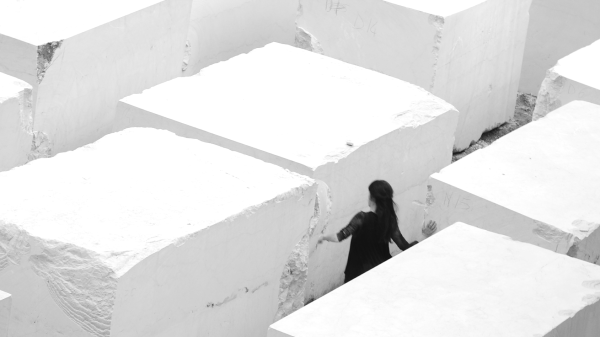
PARTY OF A LIFETIME
Installation 2023
Using rocks,branches, plants, bacteria, fungi as guides, storytellers of the history of the world and the symbiotic relationships that had to be established and kept in balance for the existence of what we know as nature I explore our understandings of who we are as humans out and inside of what is considered the natural world.
Through her artwork Paula Flores attempts to represent the complexity of nature, and our knowledge as well as ignorance that we have towards it. She treats themes such as interspecies communication and relationships, immigration and the disappearance of native cultures, flora and fauna as a result of modern industry; the spaces they occupy and how they’ve changed or disappeared due to commodification. Making use of diverse artistic disciplines and a mix of organic and industrial materials and procedures, she creates a dialogue regarding the current situation between human and nature.
Utilizzando rocce, rami, piante, batteri e funghi come guide, narratori della storia del mondo e delle relazioni simbiotiche che si sono dovute stabilire e mantenere in equilibrio per l’esistenza di ciò che conosciamo come natura, esploro la nostra comprensione di chi siamo come esseri umani fuori e dentro quello che è considerato il mondo naturale.
Attraverso le sue opere Paula Flores cerca di rappresentare la complessità della natura e la conoscenza e l’ignoranza che abbiamo nei suoi confronti. L’artista tratta temi come la comunicazione e le relazioni interspecie, l’immigrazione e la scomparsa delle culture native, la flora e la fauna come risultato dell’industria moderna; gli spazi che occupano e come sono cambiati o scomparsi a causa della mercificazione. Utilizzando diverse discipline artistiche e un mix di materiali e procedure organiche e industriali, crea un dialogo sulla situazione attuale tra uomo e natura.
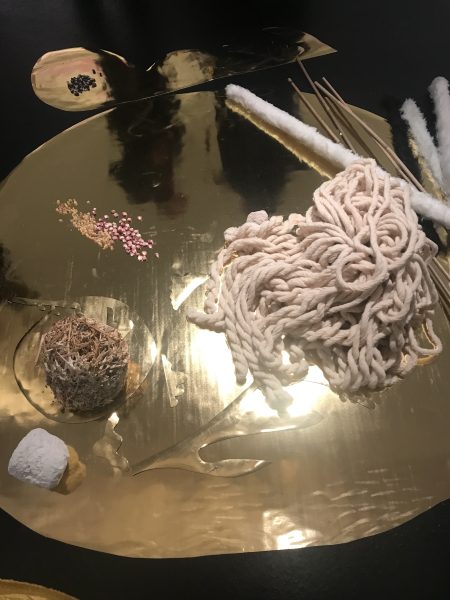
WHERE THE LIGHT IS
2 Art Lights, metal, wood, bulb,cable 2021
Sometimes we need a break or always need a break, especially in times when every second has to be efficient and used for a reason.
With this thinking, Natalia Gurova, who spent half of her life working in the journalism and communications sector in Russia and got used to dealing with time, deadlines, office spaces, and all types of non-material labor, when results are often invisible but declared, decided to deal with an ancient medium — sculpture. It’s paradoxically material and needs a hand to be done. Still, in the end, the future of those artworks is very shadowy. Will they ever be exhibited or will they always stay in the artist’s studio?
Coming not from an artistic past, Natalia gives time to work with the material, learn from it, make mistakes, fail, research, and reflect on connections between labor and knowledge. The artist needs to go through all the stages of production. “Where light is” is an ongoing installation consisting of several light sculptures made from metal, wood, fire, and bulbs. The symbolic shape of it can refer to Prometheus and can be switched off or switched on.
Natalia Gurova studied at the University of Applied Arts and Academy of Fine arts, both in Vienna.
A volte abbiamo bisogno di una pausa o ne abbiamo sempre bisogno, soprattutto in tempi in cui ogni secondo deve essere efficiente e utilizzato per un motivo.
Con questo pensiero, Natalia Gurova, che ha trascorso metà della sua vita lavorando nel settore del giornalismo e della comunicazione in Russia e si è abituata ad avere a che fare con il tempo, le scadenze, gli spazi d’ufficio e tutti i tipi di lavoro non materiale, in cui i risultati sono spesso invisibili ma dichiarati, ha deciso di confrontarsi con un mezzo antico: la scultura. È paradossalmente materiale e ha bisogno di una mano per essere realizzata. Eppure, alla fine, il futuro di queste opere è molto oscuro. Saranno mai esposte o resteranno sempre nello studio dell’artista?
Non provenendo da un passato artistico, Natalia dà il tempo di lavorare con il materiale, imparare da esso, sbagliare, fallire, ricercare e riflettere sulle connessioni tra lavoro e conoscenza. L’artista deve attraversare tutte le fasi della produzione. “Where light is” è un’installazione in corso composta da diverse sculture di luce realizzate in metallo, legno, fuoco e lampadine. La forma simbolica può fare riferimento a Prometeo e può essere spenta o accesa.
Natalia Gurova ha studiato presso l’Università di Arti Applicate e l’Accademia di Belle Arti, entrambe a Vienna.
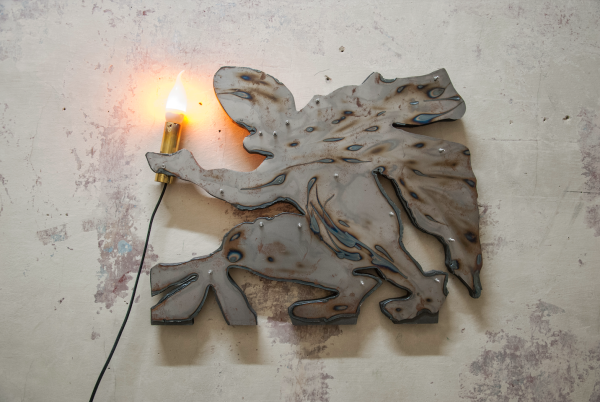
FERMÉ
Series of Photography, 2022
What would the landscape tell us humans if it had a language? Perhaps it would tell us: our relationship is interdependent. You humans have distanced yourself far from nature, our relation is out of balance, you need me more than I need you, so do not try my patience too much. In Markus Guschelbauer’s photo series, which was created during a residency in the predominantly French-speaking province of Quebec, the artist leaves his mark on the landscape. A lettering with the word FERMÉ – translated: closed – wanders through the pitoresque Canadian landscape and gives it a possible instruction to us humans.
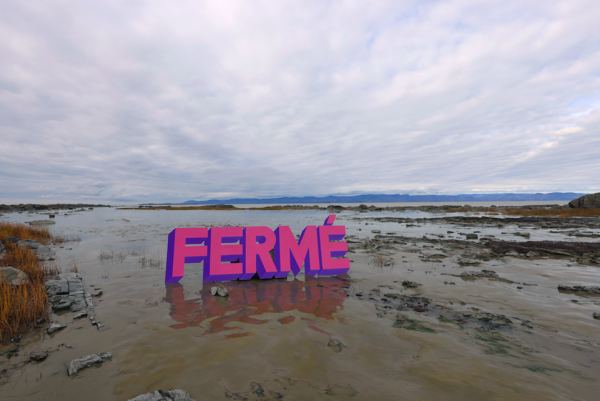
THE INVENTION OF NATURE
Series of Photography, 2021-2023
Plants began to travel at the latest in 1492, when Columbus and his troops set foot on the new continent. Unknown plants came to Europe for reasons of research, as with Alexander von Humboldt, or to edify rulers and enrich their collections. So-called neophytes have largely established themselves in our everyday life. In this tradition, I brought various plants to Croatia, to a small island, and created my garden with them. I designed my photos in the style of 19th century landscape painters such as Ferdinand Bellermann or Frederic Edwin Church. With colonialisation, borders were torn down on the one hand, and new categorisations such as race were introduced to oppress people on the other.
The chicken legs in the jar are on the one hand a reference to the taxidermied showpieces of world museums founded with predatory items, on the other hand this image reminds me of Far Eastern street kitchens. The photo series Invention of nature symbolises the schizophrenic situation between science and exploitation. The photo series Invention of Nature symbolises the schizophrenic situation between science and exploitation.
Le piante iniziarono a viaggiare al più tardi nel 1492, quando Colombo e le sue truppe misero piede nel nuovo continente. Piante sconosciute giunsero in Europa per motivi di ricerca, come nel caso di Alexander von Humboldt, o per edificare i governanti e arricchire le loro collezioni. Le cosiddette neofite si sono ampiamente affermate nella nostra vita quotidiana. Seguendo questa tradizione, ho portato diverse piante in Croazia, su una piccola isola, e con esse ho creato il mio giardino. Ho progettato le mie foto nello stile dei paesaggisti del XIX secolo, come Ferdinand Bellermann o Frederic Edwin Church. Con la colonizzazione, da un lato sono stati abbattuti i confini, dall’altro sono state introdotte nuove categorizzazioni come la razza per opprimere le persone.
Le cosce di pollo nel barattolo sono da un lato un riferimento agli oggetti tassidermizzati dei musei del mondo fondati con oggetti predatori, dall’altro questa immagine mi ricorda le cucine di strada dell’Estremo Oriente. La serie fotografica Invention of nature simboleggia la situazione schizofrenica tra scienza e sfruttamento. La serie fotografica Invention of Nature simboleggia la situazione schizofrenica tra scienza e sfruttamento.
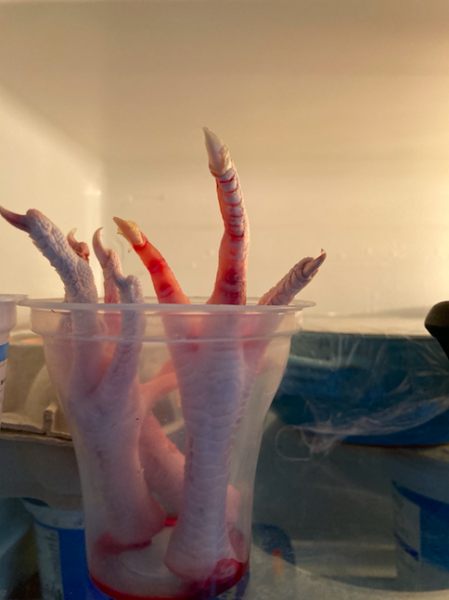
AURI SACRA FAMES
Icons, 2023
The desire of gold was always associated with a sacrifice. Seen historically, it was the gold rushes, starting in 1693/95 when Europeans moved into Brazil and shipped 10 to 15 tonnes of gold per year to Europe throughout the 18th century, and the great gold rushes in North America and Canada in the 19th century, during which indigenous populations were subdued and displaced. Vera Klimentyeva takes up these questions in her cycle Auri Sacra Fames and links the title of the exhibition with works that focus on gold. In all its shades, its brilliance and its beauty. And always connected with historical and contemporary themes. Due to the current political situation, the price of gold, a supposedly safe investment in times of crisis, is at a record high. This conjunction of historical references and daily political realities is characteristic of Klimentyeva’s artistic process.
Il desiderio di oro è sempre stato associato a un sacrificio. Storicamente, si tratta delle corse all’oro, a partire dal 1693/95, quando gli europei si trasferirono in Brasile e spedirono 10-15 tonnellate d’oro all’anno in Europa per tutto il XVIII secolo, e delle grandi corse all’oro in Nord America e Canada nel XIX secolo, durante le quali le popolazioni indigene furono sottomesse e sfollate. Vera Klimentyeva riprende questi interrogativi nel suo ciclo Auri Sacra Fames e collega il titolo della mostra alle opere incentrate sull’oro. In tutte le sue sfumature, la sua brillantezza e la sua bellezza. E sempre collegato a temi storici e contemporanei. A causa dell’attuale situazione politica, il prezzo dell’oro, un investimento presumibilmente sicuro in tempi di crisi, è ai massimi storici. Questa combinazione di riferimenti storici e realtà politiche quotidiane è caratteristica del processo artistico della Klimentyeva.
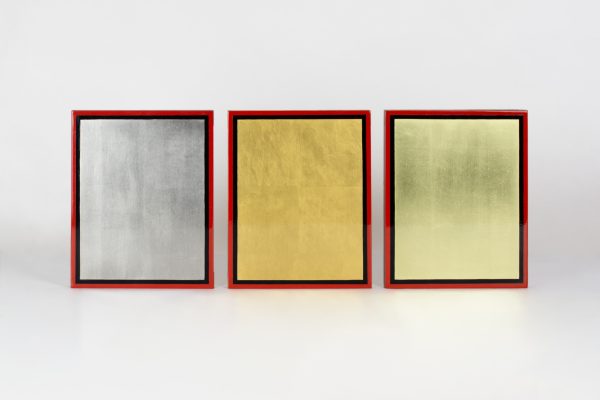
BREAKUP
Video 5’44
, 2023
Editing and filming by Vanessa Pey
Additional editing by Clàudia del Barrio
Idea, concept and performance: Gabriel Virgilio Luciani
Special thanks: Sílvia Cabrera
Breakup is a corporal aria birthed on a simmering hot day in the attic of late 19th Century Catalan modernist house. After seeing the Andrzej Żuławski film, Possession (1981), I wanted to approach the topic of a breakup. Feeling uprooted, delirious, alone, forgotten, abandoned, I felt Isabelle Adjani’s gestures came from a place of disjunction. A rupture between wanting to leave a man and yet wanting to save her family; and at the same time wanting to mutate and disappear. The friction between the desires becomes unbearable. Here the convulsions and contortions mimic what the dance the heart does in a complex relationship. After a period of numbness, betrayal, breakup, anger, come anxious pulsations and tricky positions, laced feelings and contradictory movements.
Breakup è un’aria corporale nata in una giornata calda e bollente nella soffitta di una casa modernista catalana di fine Ottocento. Dopo aver visto il film di Andrzej Żuławski, Possession (1981), ho voluto affrontare il tema della rottura. Sentendomi sradicato, delirante, solo, dimenticato, abbandonato, ho sentito che i gesti di Isabelle Adjani provenivano da un luogo di disgiunzione. Una frattura tra il desiderio di lasciare un uomo e il desiderio di salvare la propria famiglia; e allo stesso tempo il desiderio di mutare e scomparire. L’attrito tra i desideri diventa insopportabile. Qui le convulsioni e le contorsioni imitano la danza del cuore in una relazione complessa. Dopo un periodo di torpore, tradimento, rottura, rabbia, arrivano pulsazioni ansiose e posizioni insidiose, sentimenti intrecciati e movimenti contraddittori.
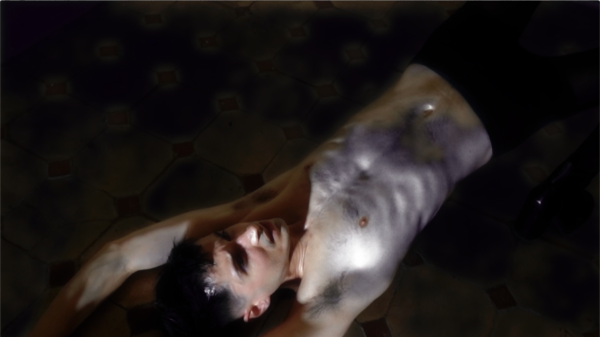
TRAJECTORIES (How many performance artists does it take to change a light bulb)
Photography, Carpet print, 2023 (Rendering in living area)
Just as we are strolling along a field, a piano drops next to us. The clash is so massive that we can not even make up if the reverberant sound is still coming from the piano or our mind. A person, seemingly an elderly woman, wearing only a jacket, climbs out of the piano. She stumbles around, until she steps on a yoghurt drink, which was unfortunately lying there. Who throws away a perfectly fine yoghurt drink? Maybe this is not the question that we should ask ourselves right now. We should ask her for help, and for answers. But nobody can move. We are frozen.
Rafael Lippuner´s artistic practice stems from incidents, or rather the coincidence of things. Coincidence isn’t interested in us at all, it speaks to us in a different tone, different than designed spaces or consumable items. It is resistance, because we are free to decide what to do with it. A coincidence presents us with far more options than buying or passing, it has no frame, no obvious intention lies behind its curtain, no gain or benefit to be made. It is out of control. This work aims to trigger a wilderness of seeing, tapping into the potential of everyday routines and the objects that we are used to for performing them.
«Trajectories» is a photographic journey that investigates movement and the narratives created by an image. Ephemeral moments and their momentum are the actors. The state of an object in motion turns into statement, presenting different qualities of the item while facing static structures in the background. The vectors have to be completed by thought, as the trajectory spans the distance between where things land to why they are moving in the first place. The elements in motion take on this agency, as they are not only part of a symbolic act or revolutionary gesture, but execute them. By choosing carpet as carrier and printing a photograph of a carpet on it, the act and the carrier merge into a real-world object, a still of a happening on-site, on the same ground.
Proprio mentre stiamo passeggiando in un campo, un pianoforte cade accanto a noi. Lo scontro è così forte che non riusciamo nemmeno a capire se il suono riverberato proviene ancora dal pianoforte o dalla nostra mente. Una persona, apparentemente una donna anziana, con indosso solo una giacca, scende dal pianoforte. Barcolla, finché non calpesta una bevanda allo yogurt, che purtroppo giaceva lì. Chi butta via una bevanda allo yogurt perfettamente integra? Forse non è questa la domanda che dovremmo porci in questo momento. Dovremmo chiederle aiuto e risposte. Ma nessuno può muoversi. Siamo congelati.
La pratica artistica di Rafael Lippuner nasce dagli incidenti, o meglio dalla coincidenza delle cose. Le coincidenze non ci interessano affatto, ci parlano con un tono diverso, diverso dagli spazi progettati o dagli oggetti consumabili. È una resistenza, perché siamo liberi di decidere cosa farne. Una coincidenza ci offre molte più opzioni di un acquisto o di un passaggio, non ha una cornice, non c’è un’intenzione evidente dietro la sua tenda, non c’è un guadagno o un beneficio da trarre. È fuori controllo. Questo lavoro mira a innescare una natura selvaggia del vedere, attingendo al potenziale delle routine quotidiane e degli oggetti a cui siamo abituati per eseguirle.
“Traiettorie” è un saggio fotografico sul movimento e sulla narrazione creata da un’immagine. I momenti effimeri e il loro slancio sono i protagonisti. Di fronte a una struttura statica, la proposizione degli elementi in movimento rimane ambigua, i suoi vettori e la sua traiettoria devono essere completati dal pensiero. L’elemento casuale, simbolico o rivoluzionario dell’azione sostiene l’emergere del gesto stesso. Le cose in movimento assumono un’agenzia propria, trasformandosi in oggetti propri.
Trajectories (Centre practice) 1-3 / 2023
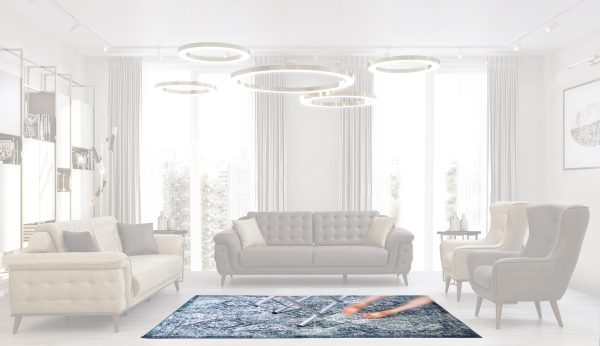
PAVO REAL
Naked, pavone imbalsamato, montato su Carrara Marmorsockel, 2021
For me, Pavo real is a sculpture that implies abuse of power. Formally, this work is irritating: the bird looks like a somewhat too thin turkey, naked, defenceless, stuffed and with a neat crown of feathers, standing on very opulent marble. The durable, somewhat brittle authenticity of the bird – rather gruesome at first glance – nevertheless radiates self-assurance and pomp.
I had my first thoughts about this work in 2017, when a young politician moved to the top in Austrian politics. I did not think that the young generation would fundamentally lack credibility, but I was thoroughly sceptical about this person. I couldn’t get Hans Christian Andersen’s “The Emperor’s New Clothes” out of my head, the story of the emperor who fell for swindlers and had the most beautiful, expensive clothes woven for himself – but without a single thread used. His followers played along with the game of the handsome (but in fact stark naked) emperor until the comment of a small child – “he’s naked” – put an end to the farce. In the real world, the bruised emperor is the aspiring politician who fancied himself in dubious splendour, let his advisory entourage earn money along the way and (co-)played a game that questioned his integrity from the start. In his own imagination as well as in the imagination of his followers, he was a colourful, dazzling peacock. In fact, he was only a crude “naked” version of himself.
In the meantime, there are several people on the national and international stage who can be associated with the naked peacock. There is a timelessness to the pavo real that can be transferred individually – and with a wink – to real people in the political arena.
Since 2017, I have been busy with the idea of the plucked, stuffed peacock. How can the project be realised? Where would I get a dead peacock? Who would stuff it for me, but pluck it first?
A few phone calls, e-mails, research, rejections and two years later I got in touch with the taxidermist Helmut Raith in Vienna’s Margareten district, one of the last masters of his trade. He wasn’t keen on the idea at first, but wasn’t completely averse to it either, always open to the unusual – after almost three years of waiting and continuous cooperation, I was able to pick up pavo real in autumn 2021 and show it to a larger audience in my exhibition “overrun +” in the Jan Arnold Gallery in the MuseumsQuartier. Barbara Beer wrote about it in the Kurier on 8 May 2022 – “Two weird birds and a naked peacock”.
Per me, Pavo real è una scultura che implica un abuso di potere. Formalmente, quest’opera è irritante: l’uccello sembra un tacchino un po’ troppo magro, nudo, indifeso, impagliato e con un’ordinata corona di piume, in piedi su un marmo molto opulento. L’autenticità durevole e un po’ fragile dell’uccello – piuttosto raccapricciante a prima vista – irradia tuttavia sicurezza e sfarzo.
Ho pensato per la prima volta a quest’opera nel 2017, quando un giovane politico è salito ai vertici della politica austriaca. Non pensavo che la giovane generazione mancasse fondamentalmente di credibilità, ma ero assolutamente scettico su questa persona. Non riuscivo a togliermi dalla testa “I vestiti nuovi dell’imperatore” di Hans Christian Andersen, la storia dell’imperatore che cadde per i truffatori e si fece confezionare i vestiti più belli e costosi, ma senza usare un solo filo. I suoi seguaci stavano al gioco dell’imperatore bello (ma in realtà nudo) finché il commento di un bambino – “è nudo” – mise fine alla farsa. Nel mondo reale, l’imperatore ammaccato è l’aspirante politico che si è fatto credere in un dubbio splendore, ha lasciato che il suo entourage di consulenti guadagnasse soldi lungo la strada e ha (co)giocato un gioco che ha messo in dubbio la sua integrità fin dall’inizio. Nella sua immaginazione e in quella dei suoi seguaci, era un pavone colorato e abbagliante. In realtà, era solo una rozza versione “nuda” di se stesso. Nel frattempo, ci sono diverse persone sulla scena nazionale e internazionale che possono essere associate al pavone nudo. C’è un’atemporalità nel pavo reale che può essere trasferita individualmente – e con una strizzatina d’occhio – a persone reali nell’arena politica.
Dal 2017 sono impegnato nell’idea del pavone spennato e impagliato. Come si può realizzare il progetto? Dove posso trovare un pavone morto? Chi lo impaglierebbe per me, ma prima lo spennerebbe?
Alcune telefonate, e-mail, ricerche, rifiuti e due anni dopo mi misi in contatto con il tassidermista Helmut Raith del quartiere Margareten di Vienna, uno degli ultimi maestri del suo mestiere. Dopo quasi tre anni di attesa e di continua collaborazione, nell’autunno del 2021 sono riuscita a prelevare il pavo vero e proprio e a mostrarlo a un pubblico più vasto nella mia mostra “overrun +” nella Jan Arnold Gallery del MuseumsQuartier. Barbara Beer ne ha scritto sul Kurier dell’8 maggio 2022 – “Due strani uccelli e un pavone nudo”.
huberthasler @instagram
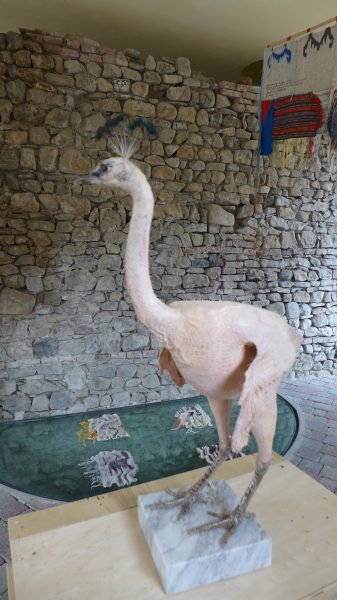
tritignant 16
Series of Paintings 2022-2023
What remains?
A question we all ask ourselves at this time and Werner Jakits deals with it in his new series trintingant.
But he goes even further and post-apocalyptic a hazy world emerges that satisfies a strange longing.
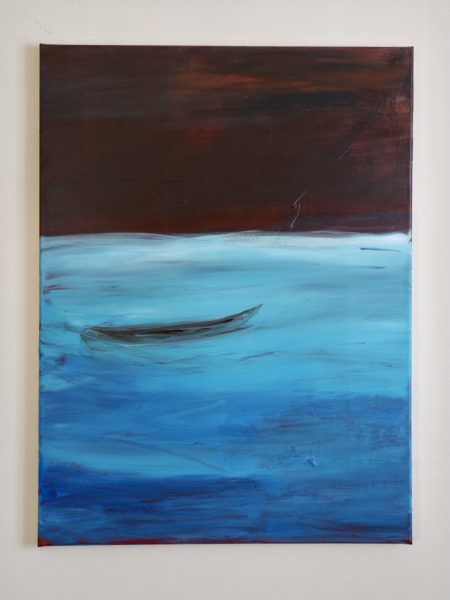
Photocredit christinajaegersberger.com
TUMBLING DICE Movie Screening
Regie Werner
Jakits Musik Mani Hofer
CAST
Christine Jägersberger, Julia Pollak, Mila Petrovic, Leonie Rabl Felix Dennhardt, Sascha Petrovic, Florian Rötel,
Florentiner Scheicher
In the first part, Tumbling Dice – The Interviews, Werner Jakits locates the background of his story in the years 1970 – 1982, through interviews with Jean Pierre Melville, Angela Davis and Dennis Hopper. They are brought from the past into the present with the classic Driver, an homage to “Driver” by Walter Hill. These 3 personalities are interpreted by silent actors. The interviews exude a timeless relevance. The basic themes resonating with Melville such as isolation, friendship, lone wolves emerge in Jakit’s narrative. Failure is implicit in the heroes, outsiders on a quest, between past and present.
Nella prima parte, Tumbling Dice – Le interviste, Werner Jakits colloca lo sfondo della sua storia negli anni 1970-1982, attraverso interviste a Jean Pierre Melville, Angela Davis e Dennis Hopper. Questi vengono portati dal passato al presente con il classico Driver, un omaggio a “Driver” di Walter Hill. Queste tre personalità sono interpretate da attori muti. Le interviste emanano un’attualità senza tempo. I temi fondamentali che risuonano con Melville come l’isolamento, l’amicizia, i lupi solitari emergono nella narrazione di Jakit. Il fallimento è implicito negli eroi, outsider in ricerca, tra passato e presente.
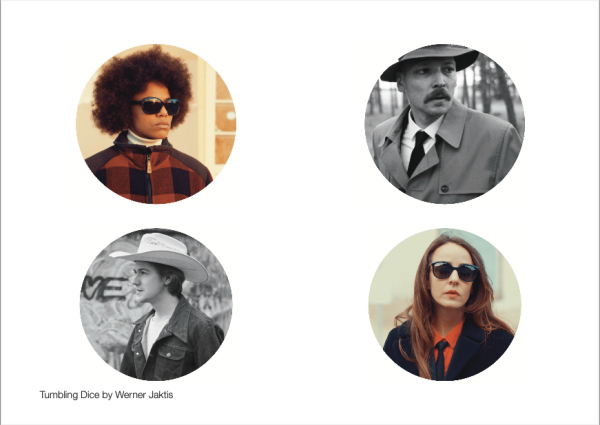
ILLUMINATI MUTAMENTI \ Enlightened mutations
Performance, Suoni e voce di Messalina Fratnic, prodotto da Mario Kunst, 2023
Starting from a suggestion of a Tantric painting, I let this performance create itself. An image I have been meditating on for months. The author is from an ancient Tantric family (anonymous) who painted the work after his meditation, and the message attached to this work is:
“A golden bronze bindu, a point or drop of extraordinarily concentrated energy, containing, in the words of André Padoux, “the undifferentiated absolute.” Working with this image, the adept will come to “see” the world-as it is and in its entirety.
My performance is meant to bring attention to the possibility of finding that light within everyone, like a small light very concentrated in one spot within the body, which can expand from the core expanding as a warm energy all around, transforming everything it touches.
To come to perceive the world as it is, it is essential to immerse oneself in oneself to find oneself and act in the world in a more conscious way. The alchemy of transformation after one’s trauma into more conscious beings.
The number 7 is the number of turns I will make with my body on a golden circle placed on the floor. The performance will be seen when looking from the top of the patio, I will be camouflaged with the carpet. Another larger purple carpet is placed underneath the golden one. I move in a motion that traces the pattern of a labyrinth that for the ancients represented the ‘womb, and thus birth.
My movement from the golden center, will fade a little on the purple carpet; the final effect is reminiscent of the color of one painting fading onto another. The dance will be rhythmed by the sounds of musician Messalina Fratnic and produced by Mario Kunst.
Partendo da una suggestione di un dipinto tantrico, lascio che questa performance si crei. Un’immagine sulla quale ho meditato per mesi. L’autore proviene da un’antica famiglia tantrica (anonima) che ha dipinto l’opera dopo la sua meditazione e il messaggio legato a quest’opera è:
“Un bindu di bronzo dorato, un punto o una goccia di energia straordinariamente concentrata, contenente, secondo le parole di Andrè Padoux, “l’assoluto indifferenziato”. Lavorando con questa immagine, l’adepto arriverà a “vedere” il mondo – così com’è e nella sua interezza.
La mia performance vuole portare l’attenzione alla possibilità di trovare quella luce che ognuno ha dentro di sé, come una piccola luce molto concentrata in un punto all’interno del corpo, che può espandersi dal nucleo espandendosi come una calda energia tutt’intorno, trasformando tutto ciò che tocca.
Per arrivare a percepire il mondo cosi com’è, è fondamentale immergersi in se stessi per ritrovarsi e agire nel mondo in modo più consapevole. L’alchimia della trasformazione dopo il proprio trauma in esseri più consapevoli.
Il numero 7 è il numero dei giri che compierò con il mio corpo su un cerchio d’oro posto sul pavimento. La performance si vedrà guardando dall’alto del patio, io sarò mimetizzata con il tappeto. Un altro tappeto viola più grande è posto sotto a quello dorato. Mi muovo in un movimento che traccia il disegno di un labirinto che per gli antichi rappresentava l’ utero, e quindi la nascita.
Il mio movimento dal centro dorato, sfumerà un po’ sul tappeto viola; l’effetto finale ricorda il colore di un quadro che sfuma su un’altro. La danza sarà ritmata dai suoni della musicista Messalina Fratnic e prodotto da Mario Kunst.
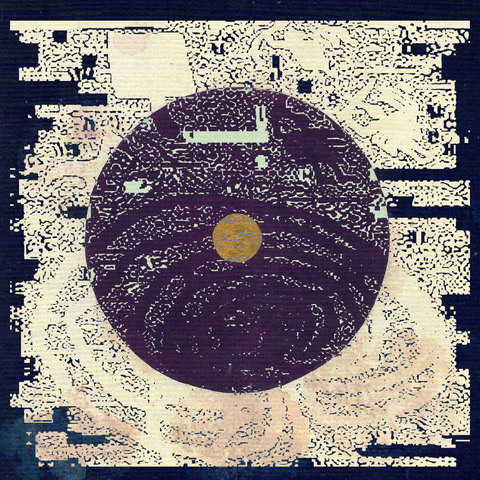
plasticity
20m plastic film_installed on a coast line / isle brac, croatia, 2014 / 2018
the installation addresses the incessant contamination of natural systems of order by artificial materials and their inherent properties.
a thin plastic film which partially covered the surface of the sea became the field of action.
“every little piece of plastic manufactured in the past 50 years that made it into the ocean is still out there somewhere.”
tony andrady, chemist at the american research triangle institute
l’installazione affronta l’incessante contaminazione dei sistemi di ordine naturale da parte dei materiali artificiali e delle loro proprietà intrinseche. una sottile pellicola di plastica che ricopriva parzialmente la superficie del mare è diventata il campo d’azione.
“Ogni piccolo pezzo di plastica prodotto negli ultimi 50 anni e finito nell’oceano è ancora là fuori da qualche parte”.

PRIVATE AND/OR PUBLIC
Soft Sculpture, 2022
Can we be aware of the line between private and public activity in our lives? Is that harder if the subject is the one who creates? Weaving in her room, did my grandmother ever think that by creating that piece of fabric on the loom, her life would go from a private to a public one (inaccessible to her at the time)? By transposing a piece of textile that I weave by hand into an object titled installation in space, I break through the thin line between the private and the public. I make the soft structure of the fabric stop, freezing it, making it hard as stone, so that the outside view can feel how it slides under my fingers, rounded and tender. The production of material on the loom is a very intimate physical moment in which energy moves harmoniously through our body and by repeating the same procedures produces a rhythmic sound with which thoughts relax. The procedure can be viewed as meditative, cathartic, but very private and intimate. Observed throughout history, weaving has been the product of those who spend most of their time at home, who take care of the family and mostly women’s work. For a long time, it had the characteristic of decorative art, the one that is less valuable compared to the art produced by the big names in art history, done mostly by the male gender. As a craft or decorative art, weaving remained in the intimate zone. With its softness, colors, seductive charm, we read it as a woman’s energy. When I shape such energy and publicly present it into an object, it becomes a political act.
Possiamo essere consapevoli del confine tra attività privata e pubblica nella nostra vita? È più difficile se il soggetto è colui che crea? Tessendo nella sua stanza, mia nonna ha mai pensato che, creando quel pezzo di tessuto sul telaio, la sua vita sarebbe passata da privata a pubblica (inaccessibile per lei in quel momento)? Trasponendo un pezzo di tessuto che tesso a mano in un’installazione intitolata a un oggetto nello spazio, rompo la linea sottile tra il privato e il pubblico. Faccio fermare la struttura morbida del tessuto, congelandolo, rendendolo duro come la pietra, in modo che lo sguardo esterno possa sentire come scivola sotto le mie dita, arrotondato e tenero. La produzione di materiale sul telaio è un momento fisico molto intimo in cui l’energia si muove armoniosamente attraverso il nostro corpo e, ripetendo le stesse procedure, produce un suono ritmico con cui i pensieri si rilassano. Il procedimento può essere visto come meditativo, catartico, ma molto privato e intimo. Osservata nel corso della storia, la tessitura è stata il prodotto di coloro che trascorrono la maggior parte del tempo in casa, che si prendono cura della famiglia e che sono per lo più donne. Per molto tempo ha avuto la caratteristica di arte decorativa, quella che ha meno valore rispetto all’arte prodotta dai grandi nomi della storia dell’arte, realizzata per lo più dal genere maschile. Come artigianato o arte decorativa, la tessitura è rimasta nella zona intima. Con la sua morbidezza, i suoi colori, il suo fascino seduttivo, la leggiamo come un’energia femminile. Quando do forma a questa energia e la presento pubblicamente in un oggetto, diventa un atto politico.
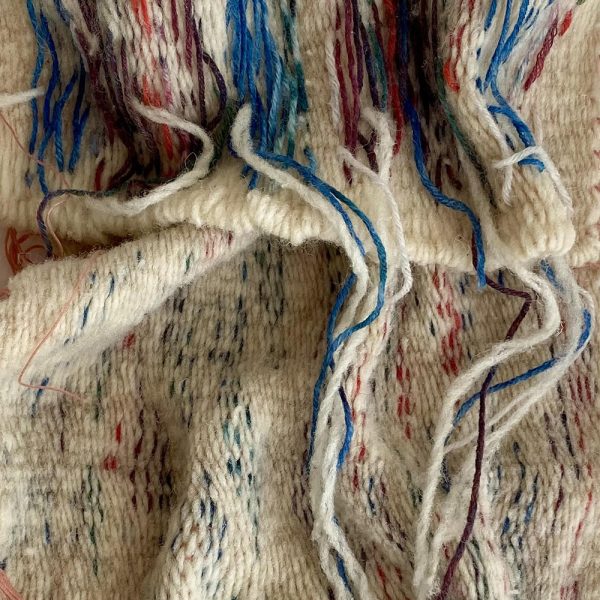
Photocredits by the artists
Photocredits by the artists, Mute Insurgent
